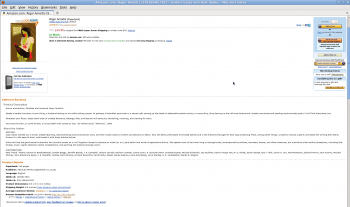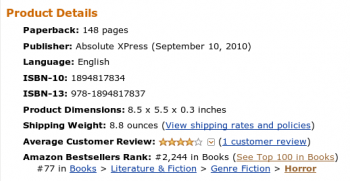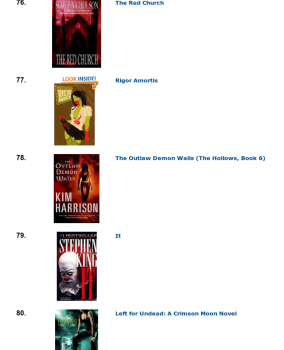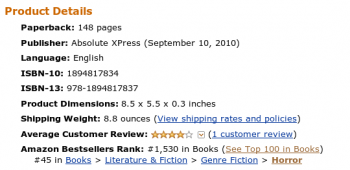(The follow-up to this post is here.)
Very important note: This so far is all speculation based on bits and pieces I’ve found online, common sense, and a good biological education. After the press conference and the expected Science paper come out, I will write up a better and more accurate summary. This is what I think is going to be said. I’m also commenting on things that I know are wrong but are circulating online. I’m updating this as I have time and see new bits of (mis)information.
(new stuff added to the end)
Final notes on this post: The press conference was very good. I’m quite impressed by Dr. Felisa Wolfe-Simon. Her career is already made, only 4 years after her PhD, and I expect she will do many more great things. The scientists involved confirmed what I’d been expecting, and added more detail. I expect the press conference will be archived online shortly and will post a link when it does.
The Science paper has been released but requires a subscription. I’ll be reading it and summarizing it in its own post. This one has gotten quite long enough, don’t you think? In the meantime, the links at the very bottom of this page do a good job with the story, unlike some of those in the beginning and middle.
The buzz going around is that NASA’s press conference later today will announce that they’ve found bacteria in Mono Lake that use arsenic instead of phosphorus in their DNA. I think. The early leaked reports are woefully bad on basic biology. Here’s a better article.
Chemically arsenic is similar to phosphorus, and can form similar compounds, so its substitution for phosphorus in DNA is plausible. And arsenates are known to be used in the respiratory pathways of other bacteria, though arsenic is toxic to most life. Bacteria are highly adaptable little things, after all.
I’ve seen some internet buzz about these “non-carbon based life forms” – complete nonsense. The bacteria in question need almost the same elements as any other terrestrial life — carbon, hydrogen, nitrogen, oxygen, and sulfur — but substitute arsenic for the phosphorus that formerly was thought to be a requirement. So also not “made of arsenic,” sorry.
Oh, and: some people have decided this is non-terrestrial life. That’s also nonsense. These are purely home-grown bacteria, just with a new and unusual chemistry.
Third thing, and I’m seeing this one even in news stories: “bacteria that can survive in arsenic.” Well yes, sort of, but that’s not new. Neither even are bacteria that use arsenic as part of their metabolism (respiration). What’s new is that these bacteria use arsenic instead of phosphorus. They apparently need no phosphorus at all, having replaced it with arsenic even in their DNA. (My guess is they otherwise function just like all other terrestrial bacteria.)
And more: the Huffington Post completely bombs their article; it’s so bad that I’m reluctant to link it. “Arsenic-eating bacteria” – not exactly, and in the crude sense also not novel. And “phosphorus in the atmosphere” – definitely not. Phosphorus cycling is almost entirely through water and sediment. The only way it would get into the atmosphere is attached to soil particles. At least they got the “not aliens” part right.
I’m not a good-enough chemist to know whether there might be possible substitutions for any of the other big six, but I suspect not. (Edit: Boron and silicon have both been proposed in science fiction as carbon replacements. Possible? Maybe, but boron is rare and silicon is less-reactive than carbon so both are less likely. Then again, arsenic is considerably less likely than phosphorus. In a big-enough sample size, who knows?)
This, to a biologist, is huge, just in case you were wondering. It changes established wisdom about the conditions necessary for life, and changes what we might look for in non-terrestrial environments. If nothing else, every intro biology book will now have to be rewritten, because they all say that six elements are necessary for life, and that’s no longer true.
To my mind, this is the one of the major differences between science and religion: scientists get wildly excited and happy when someone proves our basic dogma wrong.
Okay, here’s some good and factual stuff.
The lead scientist, Dr. Felisa Wolfe-Simon, has been studying arsenic-metabolizing bacteria for some time. She’s the lead author on a 2009 paper describing the potential substitution of arsenic for phosphorus in biochemical pathways.
Dr. Wolfe-Simon writes (with links to the relevant PDF journal articles):
Essentially, arsenic (in the oxidized 5+ state as arsenate) is biologically, so similar to phosphate that many enzymes cannot recognize the difference. This constitutes the basis for much of the toxicity of arsenate and so most detoxification pathways in biology aim to reduce arsenate to more volatile forms for easier removal from biological systems. […] In fact, in contrast to phosphorus, arsenic readily forms sulfides and thus may have been available to early life at hydrothermal vents and similar environments. Given the distinct similarity between these two elements my coauthors and I assemble plausible TESTABLE hypotheses regarding the liklihood of life arising to either originally incorporate arsenate in a functional sense, and/or more speculatively, alternative forms of life utilizing a genetic system entirely based on arsenic. […]
To further this hypothesis, we have embarked on two different approaches to test assimilatory arsenic utilization. Firstly, as part of the NASA Astrobiology Institute we are examining arsenate-rich environments to hunt and enrich cultures for organisms utilizing arsenate in novel and unique modes.
There’s an excellent article about Dr. Wolfe-Simon’s research in Astrobiology Magazine.
To perform her experiments, Wolfe-Simon collected samples of lake water and lakeshore mud in August 2009 and brought them to Ron Oremland’s USGS lab in Menlo Park, California. The experiments consists of putting about one milliliter of sampled lake water or mud into a test tube that contains an artificial simulation of Mono Lake water’s chemical makeup – Wolfe-Simon is running two sets of experiments in parallel, one using mud, the other lake water – and adding glucose, vitamins and all of the other chemical goodies that life needs to thrive. With one crucial exception: instead of adding phosphorus to the mix, Wolfe-Simon adds arsenic. A lot of arsenic. In the highest-concentration experiments, nearly 40,000 times the EPA safety level.
When the clear liquid in the test tube turns cloudy (becomes turbid), Wolfe-Simon moves to the next phase of the experiment. “If it gets cloudy, it kind of suggests that something is growing,” she explains She then extracts a one milliliter of liquid from the first-round test tube and squirts it into a second test tube, which again contains a high arsenic concentration. The effect is to increase the ratio of arsenic to phosphorus in the environment, because the only phosphorus available is what has come along for the ride from the original sample, which has now been diluted ten-fold. After each dilution, Wolfe-Simon waits a few days to see whether the liquid becomes turbid again. If it does, she repeats the transfer, to another test tube with yet another ten-fold dilution.
“At first we’ll get normal organisms, organisms we might recognize. They may be very interesting, but they’re gonna be the same type of biology that we’re used to. And then slowly, over time, [we’ll be] left with anything that can really survive under an arsenic, no-phosphorus condition,” Wolfe-Simon says.
This is the experiment from which I expect to hear results later today.
And more. The press conference is still an hour off, but reputable sources are starting to come out with actual science-based information: Nature, Ars Technica.
It sounds like the As indeed was used in ATP and other biomolecules, as well as in the DNA. I’m interested and unsurprised to hear that arsenic-using bacteria grew more slowly than those using phosphorus. The more efficient approach is likely to be the dominant one over the long-term. It’s also very interesting that there were morphological changes in the bacteria using arsenic.
Here’s a nice discussion at Discover Magazine by Ed Yong. I agree with his take on how NASA handled the story. This is incredibly cool stuff, but people who were hoping for alien life are going to be profoundly disappointed.




